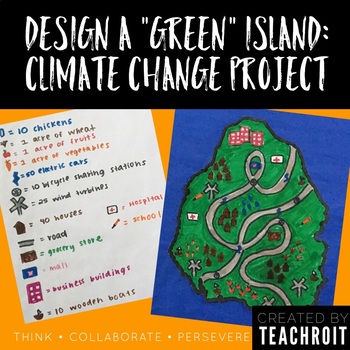Design A "Green" Island: Climate Change Project PBL (NGSS Aligned, Editable)
- Zip
What educators are saying
Description
It is the year 2100 and climate change has become a more serious problem than ever. Global temperatures have risen higher than they have ever been in the past. A new island has been found that has been untouched by humans. In this project, students will compete to be the group to colonize that island. Their goal is to create an island that is desirable to live upon but also has a small carbon footprint.
Students will be required to perform calculations and make choices about what types of food/agriculture they will use to provide for 1,000 citizens. They will create a business plan to delineate their choices. They will also create a map to serve as a blueprint for what their island will look like.
This project is cross-curricular and a good addition to any unit on climate change or human impact on the environment. It is aligned with middle school and high school NGSS content standards as well as engineering practice.
Materials required: Markers/Colored pencils/Crayons, Calculators, Posters/Butcher paper, Scissors, Glue


